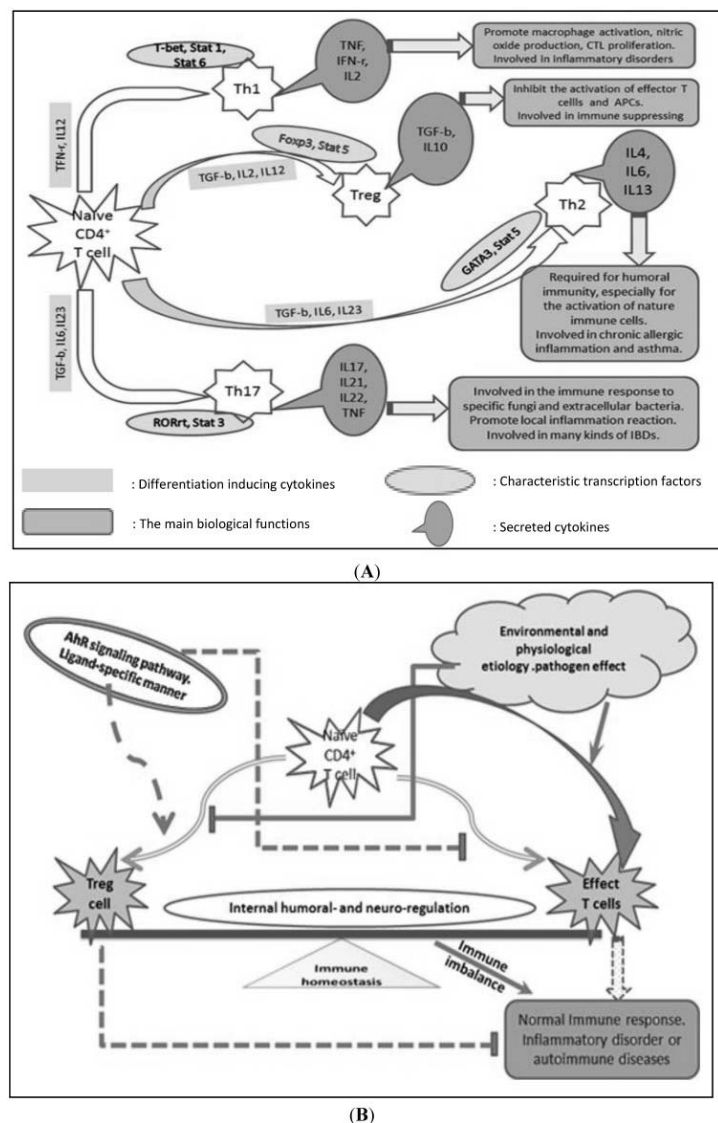The immune system in detail
The activation of the Ah receptor entails a correspondingly high production / distribution of native (non-programmed) T cells (Treg cells) in the spinal marrow (namely in proportion to the triggering hazardous substance) that cause - as a first reaction - a painful inflammatory process at the production site (spinal marrow in the lumbar spine region).
The distribution of native T cells leads to a humoral immune response that not only manifests itself by a massive increase of the macrophages and a reduction in the number of helper cells (CD4) and an increase of the killer cells (CD8), but also in an increase of the interleukine production values (Il17,IL21,IL22).
In a next step, i.e., an immune system cascade of events following to an AhR activation, B cell receptors are addressed. This leads to a substance-specific increase or reduction of the corresponding immunoglobulins. (B cells are antibodies (proteins) that are produced by B lymphocytes and directed against certain components of the antigen).
https://www.ncbi.nlm.nih.gov/pubmed/9547351
It was found only recently that the aryl hydrocarbon receptor (in case of a toxicity) is absolute necessary for the optimal B cell proliferation. The Ah receptor interacts directly with the B cell receptors and regulates them (in the best case).
https://www.ncbi.nlm.nih.gov/pubmed/9547351www.ncbi.nlm.nih.gov/pmc/articles/PMC5210087/pdf/EMBJ-36-116.pdf
In his article titled “Aryl Hydrocarbon Receptor Control of Adaptive Immunity“ published in the Pharmacological Review in October 2013, the author Franzisco J. Quintana presents the far-reaching connections of the aryl hydrocarbon receptor signalling pathway including its interactions with other receptors with the precision of a standard work.
His summary should be followed:
»In conclusion, the AhR controls important immune processes in response to endogenous and environmental cues. Consequently, the AhR and its signaling pathway offer plausible molecular mechanisms through which environmental and endogenous ligands may control immunity and autoimmunity while providing us with new opportunities for targeted, therapeutic modulation of the immune response.«
Aryl Hydrocarbon Receptor Control of Adaptive Immunity
Francisco J. Quintana and David H. Sherr
Pharmacol Rev 65:1148–1161, October 2013
http://pharmrev.aspetjournals.org/content/pharmrev/65/4/1148.full.pdf
Graph from "The Role of AhR in Autoimmune Regulation Int J Mol Sci 2014 15 10116-10135"
Published in "International Journal of Molecular Sciences — Open Access Journal"

- << Prev
- Next



